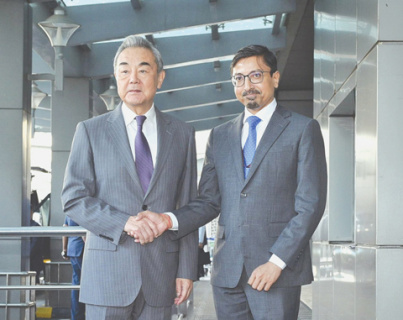
In a significant diplomatic development, Chinese Foreign Minister Wang Yi has arrived in New Delhi for high-stakes talks with India’s top national security officials. This visit, which includes a scheduled meeting with Prime Minister Narendra Modi, signals a concerted effort by the two Asian giants to mend a relationship severely damaged by a long-standing Himalayan border dispute and to navigate a shifting global landscape.
The immediate focus of the discussions is the de-escalation of military tensions along their shared border. Both nations are seeking to restore a fragile peace following a deadly clash in the Galwan Valley in 2020, which resulted in the first combat fatalities between them in decades. The talks are expected to center on establishing robust confidence-building measures to prevent future conflicts and create a stable foundation for broader cooperation, including an upcoming visit by Modi to China for a Shanghai Cooperation Organisation (SCO) summit.
However, this rapprochement is unfolding against a backdrop of escalating friction between New Delhi and Washington. Observers suggest that perceived arrogance and punitive trade policies from the Trump administration are pushing India to reassess its strategic alliances. The US has doubled tariffs on Indian goods to as high as 50%, imposing an additional 25% penalty over India’s continued purchase of Russian oil, a move that has soured economic and diplomatic relations.
Beijing has seized this opportunity with carefully crafted diplomacy. A Chinese foreign ministry official employed the metaphor of the Chinese ‘dragon’ and the Indian ‘elephant’ coexisting peacefully, positioning both nations as key partners in the ‘Global South.’ This narrative strategically frames their relationship as a form of developing-world solidarity, a subtle diplomatic maneuver that downplays China’s superpower status while appealing to a shared identity in a West-dominated world order.
For India, the outreach to Beijing is driven by mounting frustration with its traditional partner. According to reports, Indian officials have expressed deep resentment over President Trump’s characterization of India’s economy as ‘dead’ and his claims of having mediated a recent military standoff between India and Pakistan—a role New Delhi insists it never sought. This perceived lack of respect from Washington has created a powerful incentive for India to explore a more stable, if complex, relationship with its neighbor.
Beyond the high-level political dialogue, practical steps are being taken to normalize ties. After a five-year hiatus, India has once again begun issuing tourist visas to Chinese citizens. Discussions are also underway to resume direct passenger flights and ease other travel restrictions, signaling a mutual desire to rebuild the people-to-people connections that were severed by recent hostilities.
This meeting in New Delhi may represent more than just a temporary thaw; it points to a potential recalibration of power in Asia. As deepening divisions and policy missteps create a chasm between Washington and New Delhi, two historic rivals are finding compelling reasons to set aside their differences. In an era defined by populist leaders like Modi and Trump, whose public posturing often complicates diplomacy, this pragmatic shift could mark the beginning of a new chapter in international relations.
